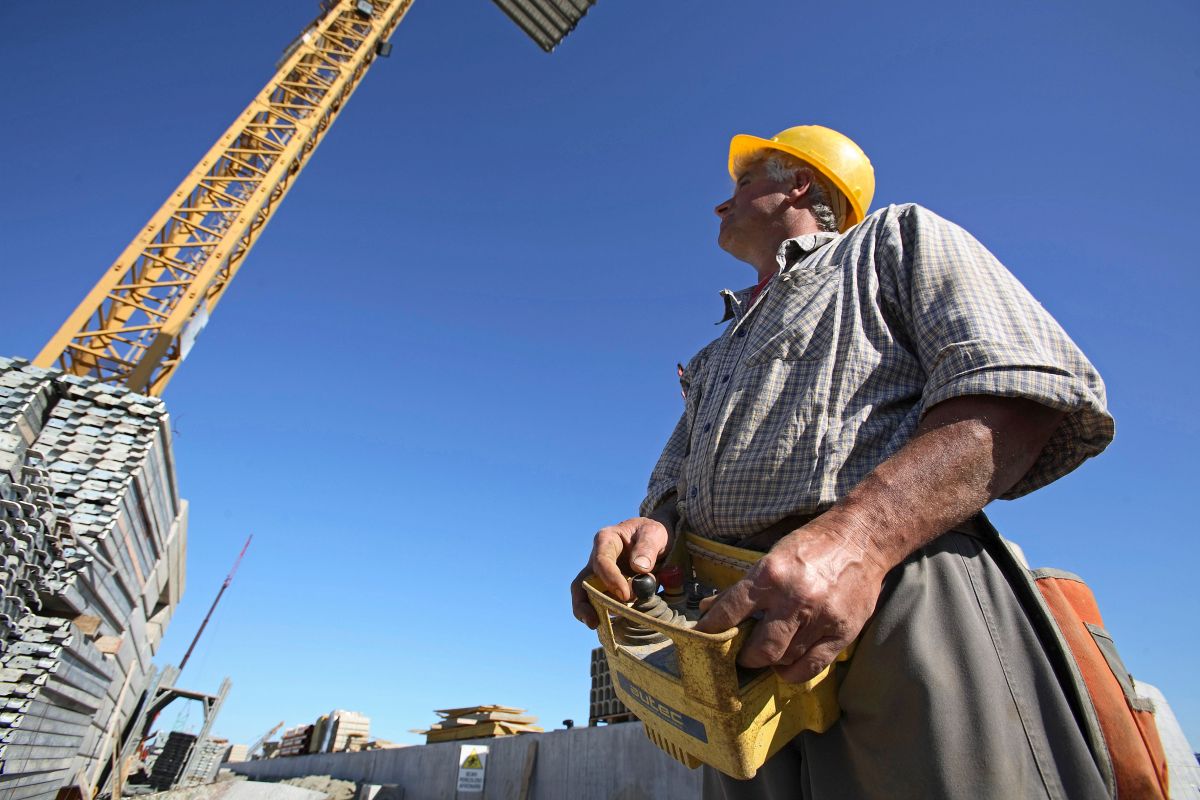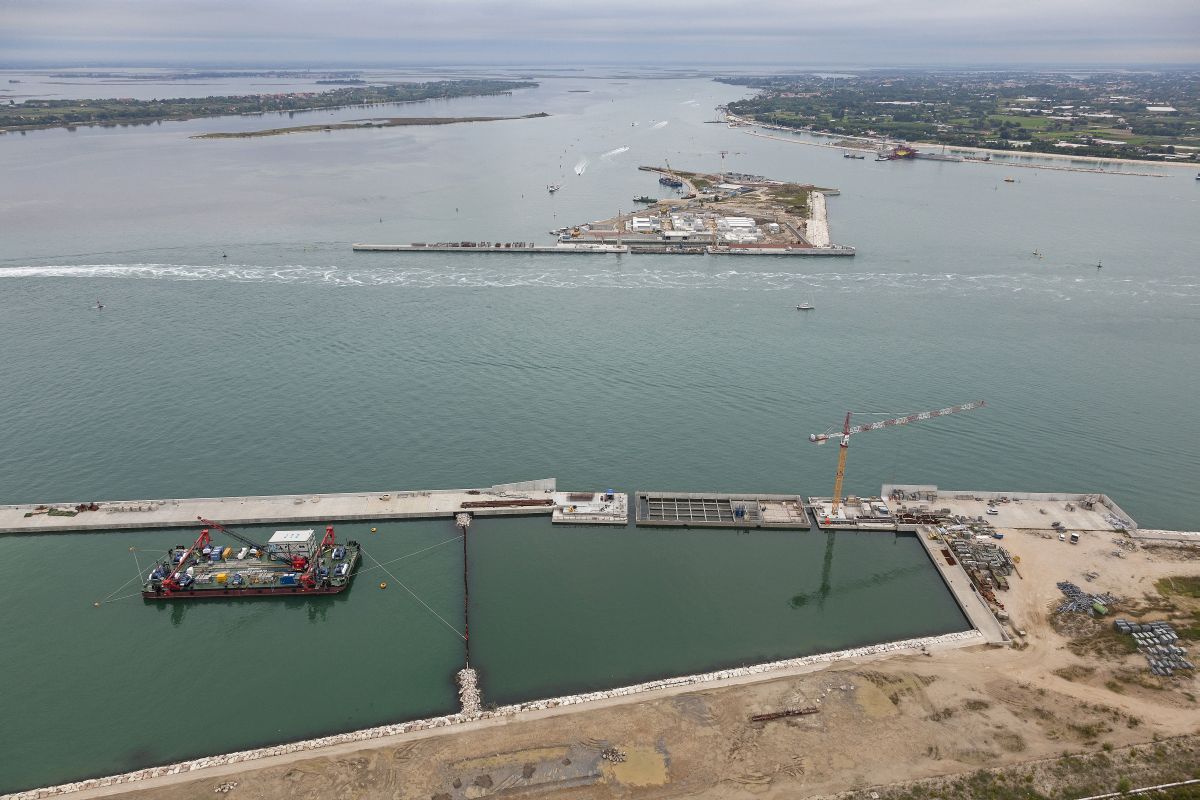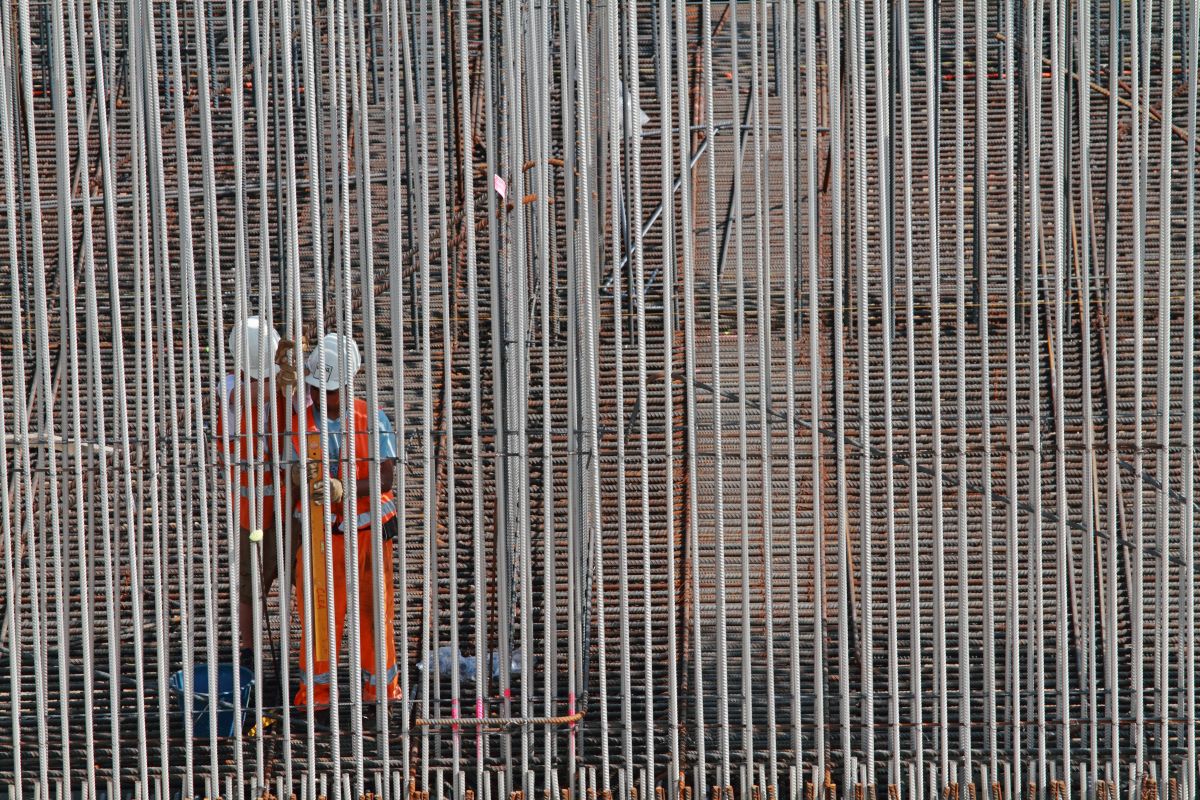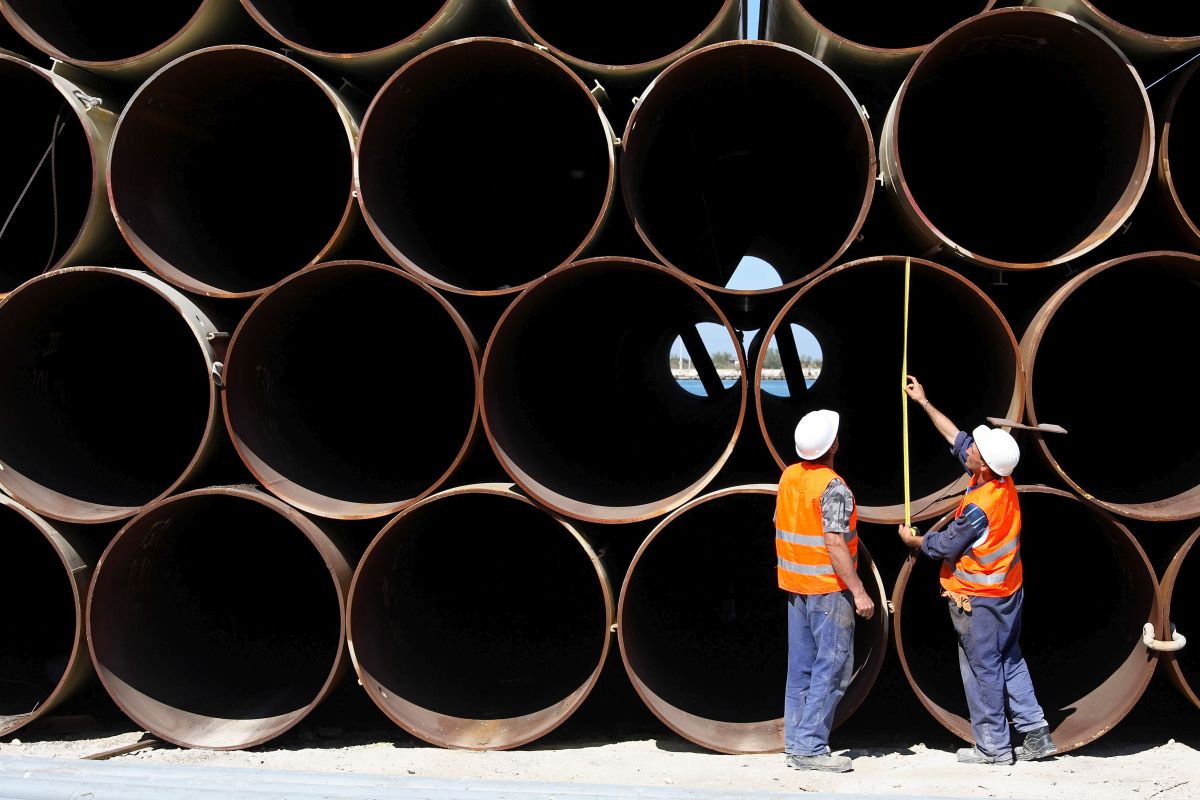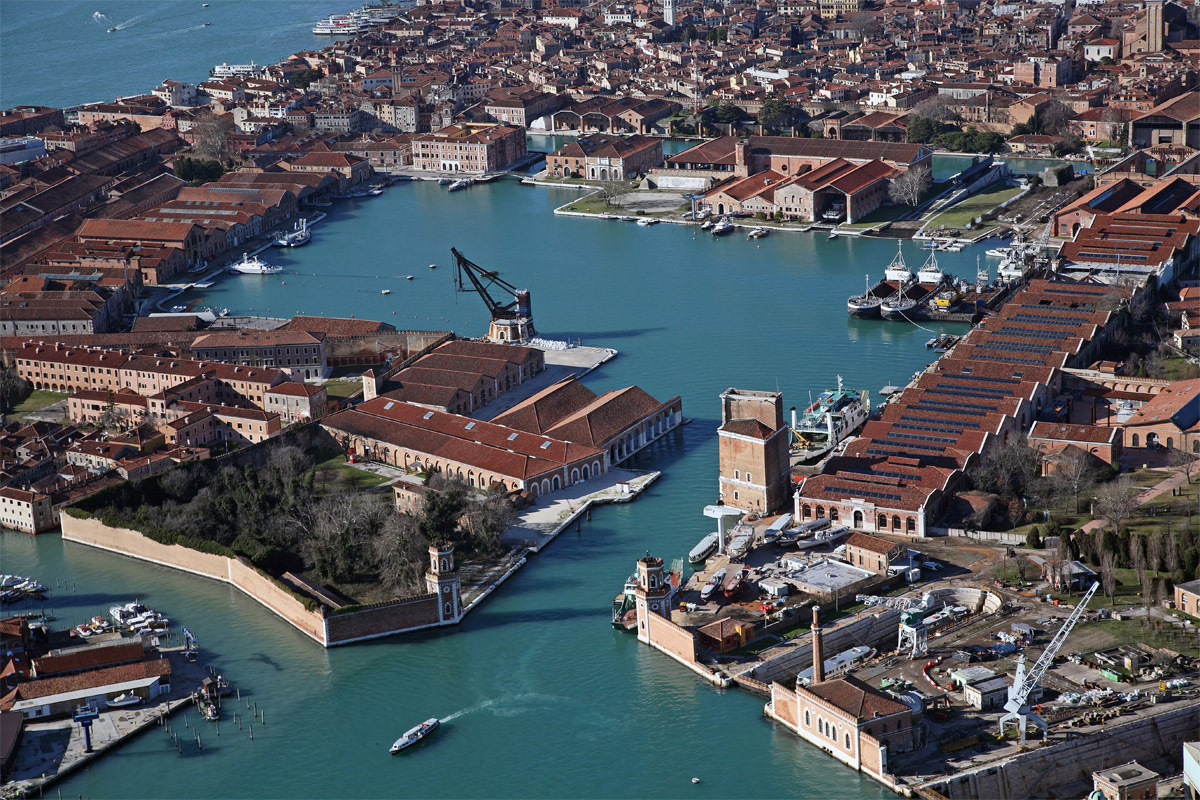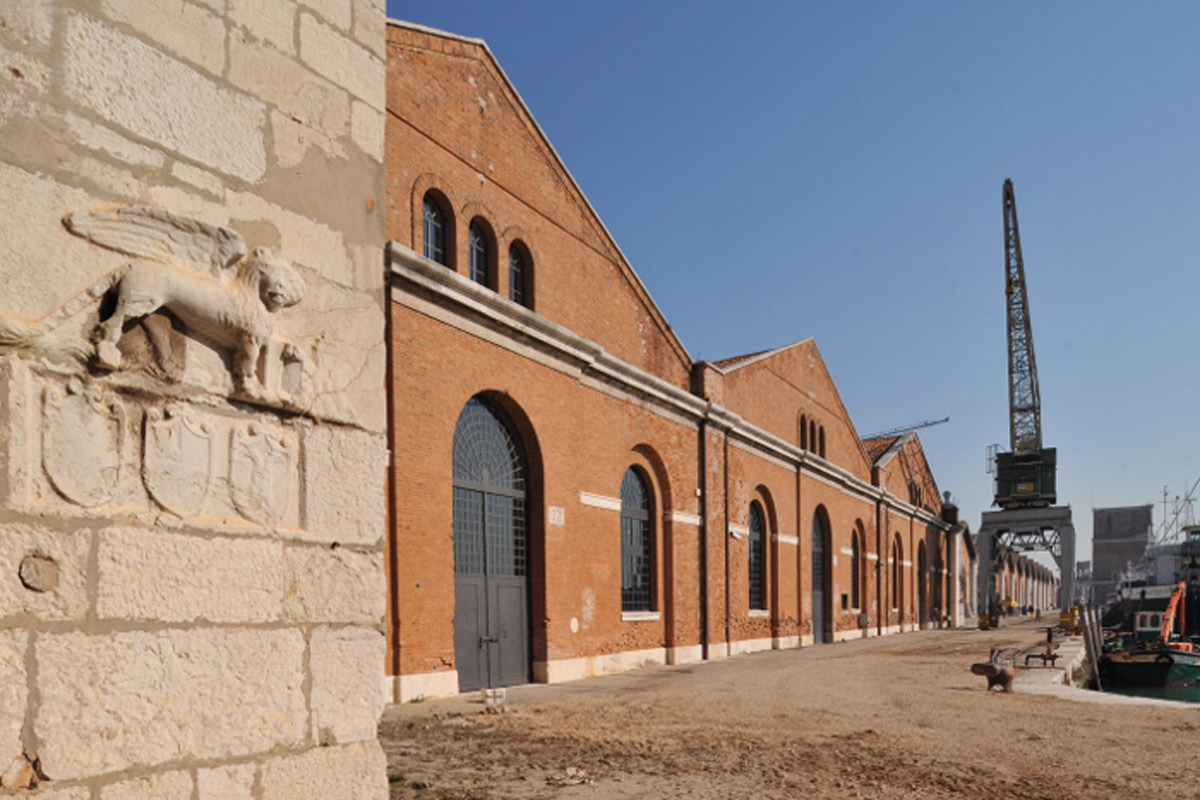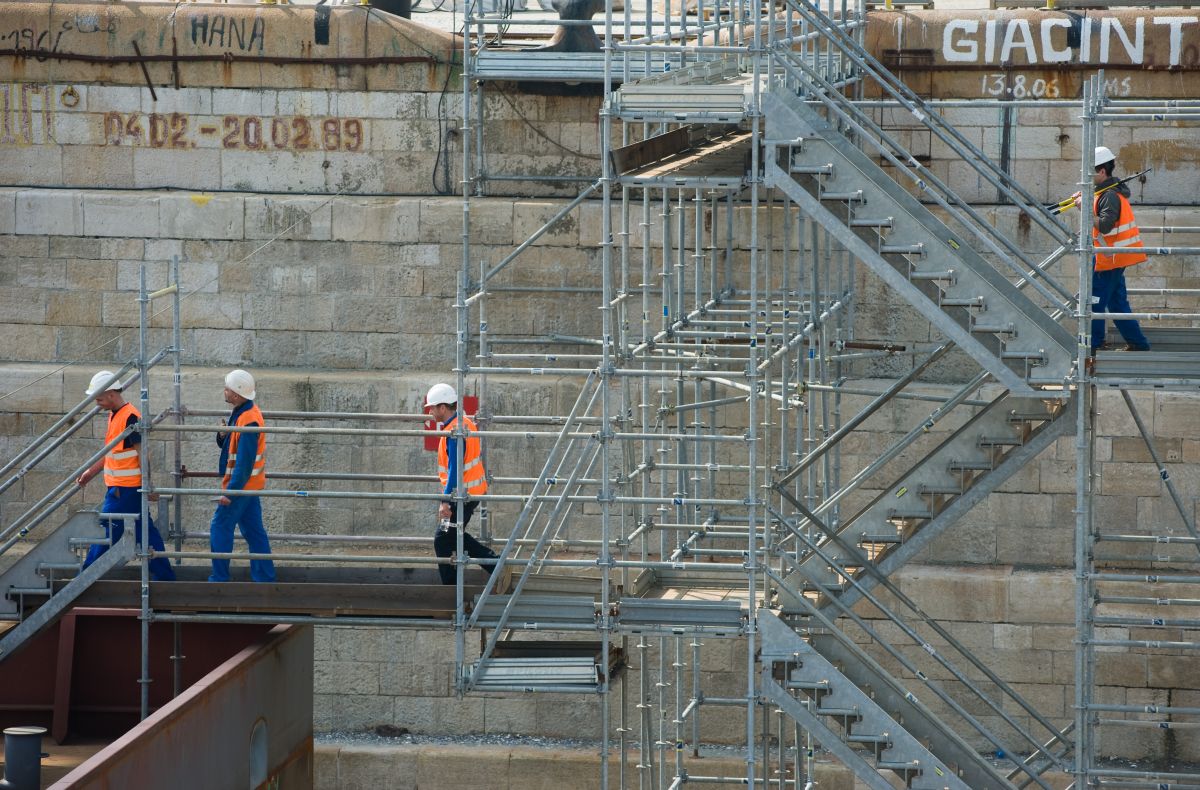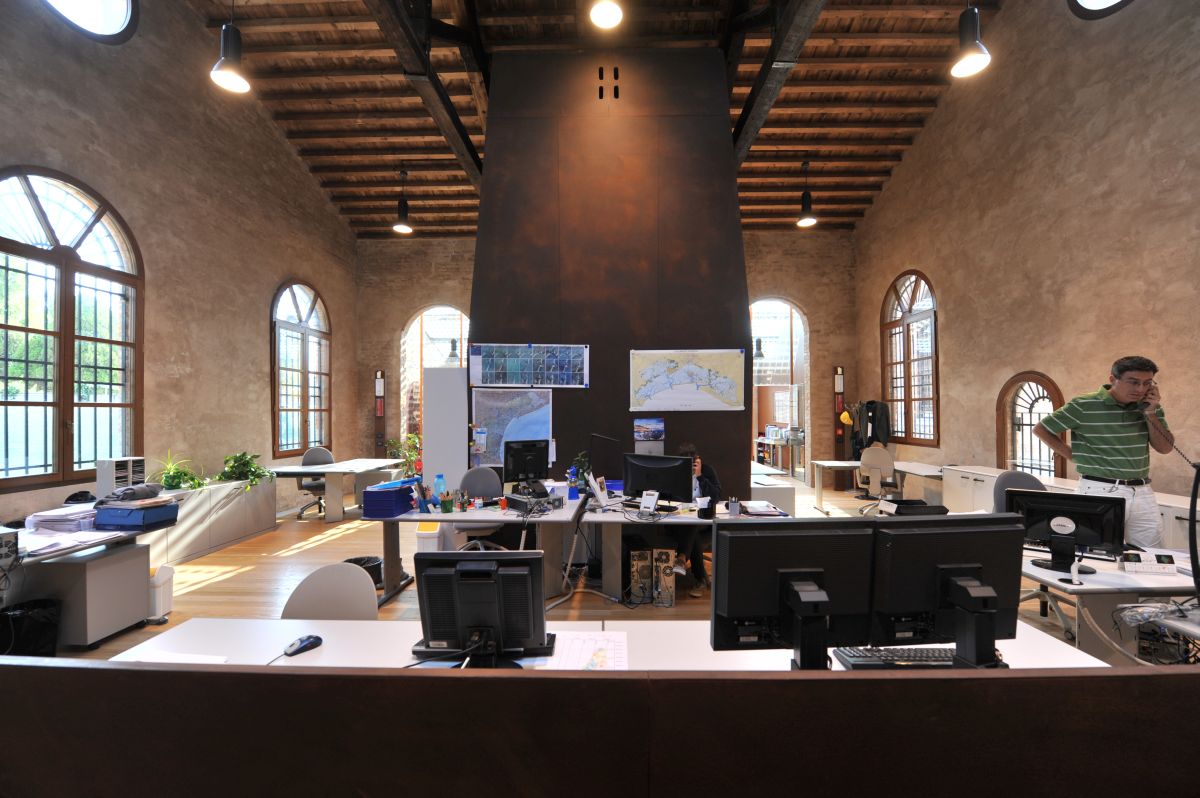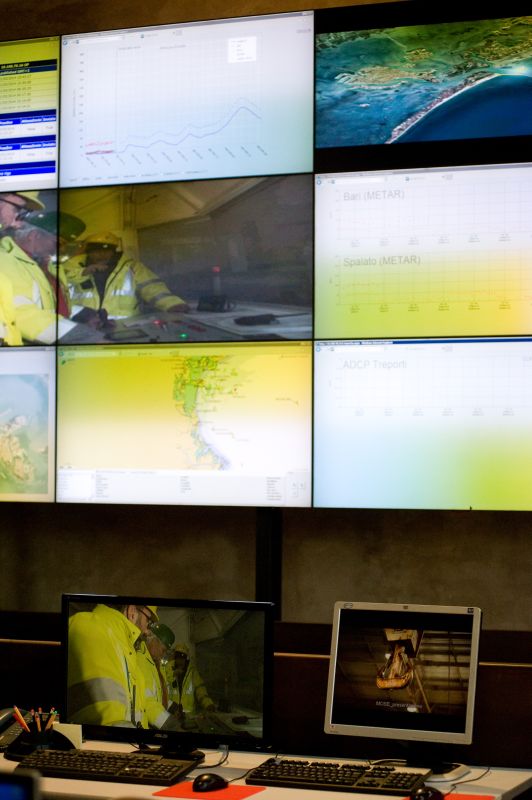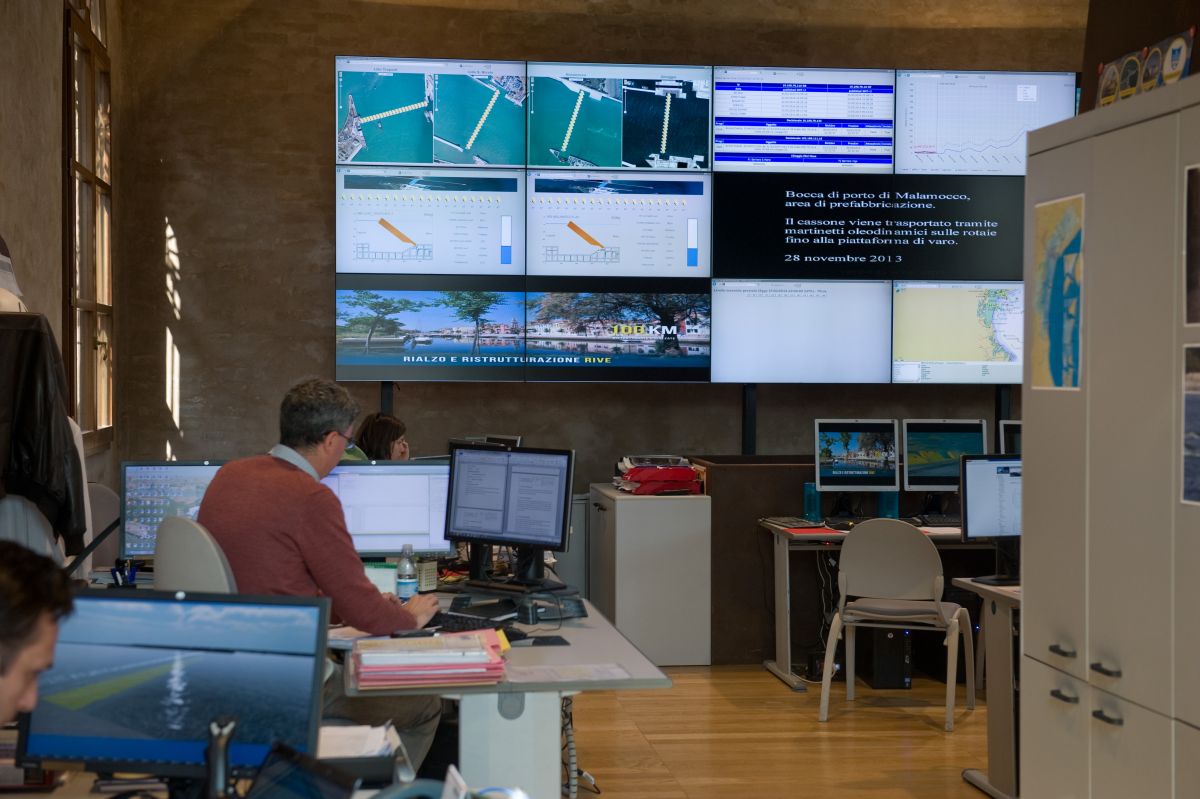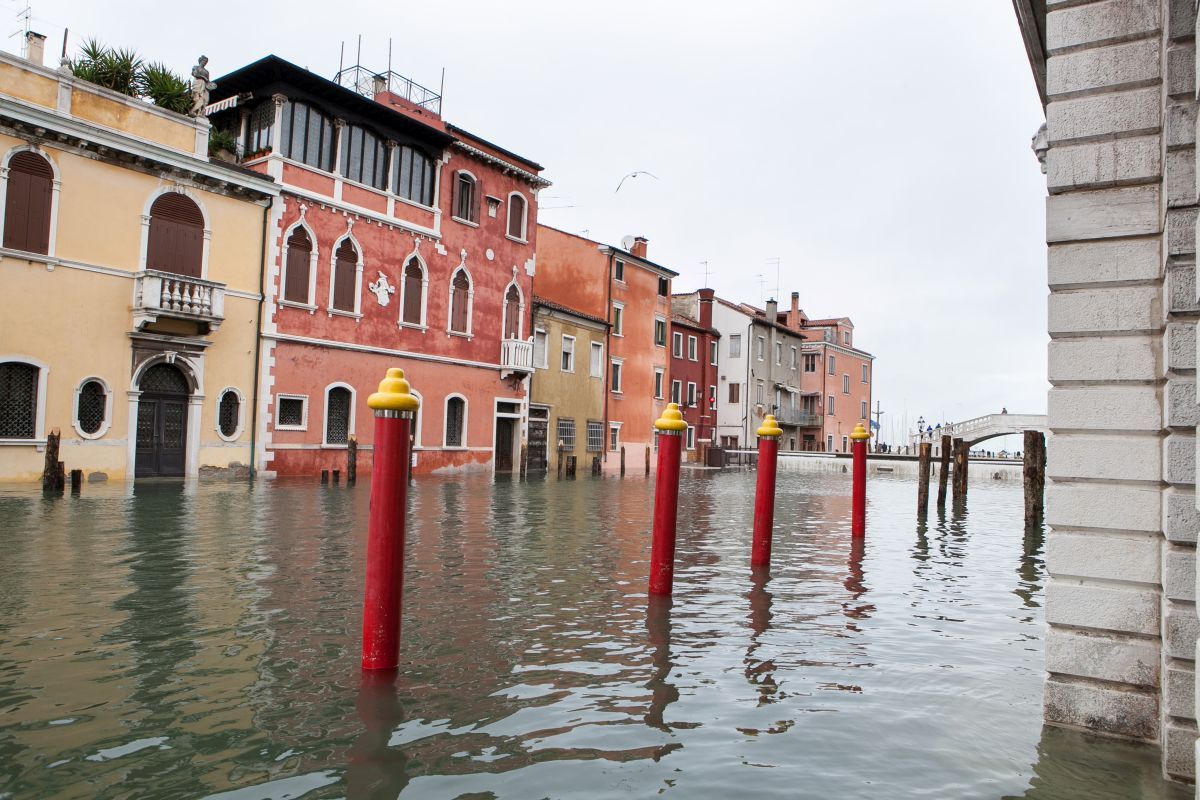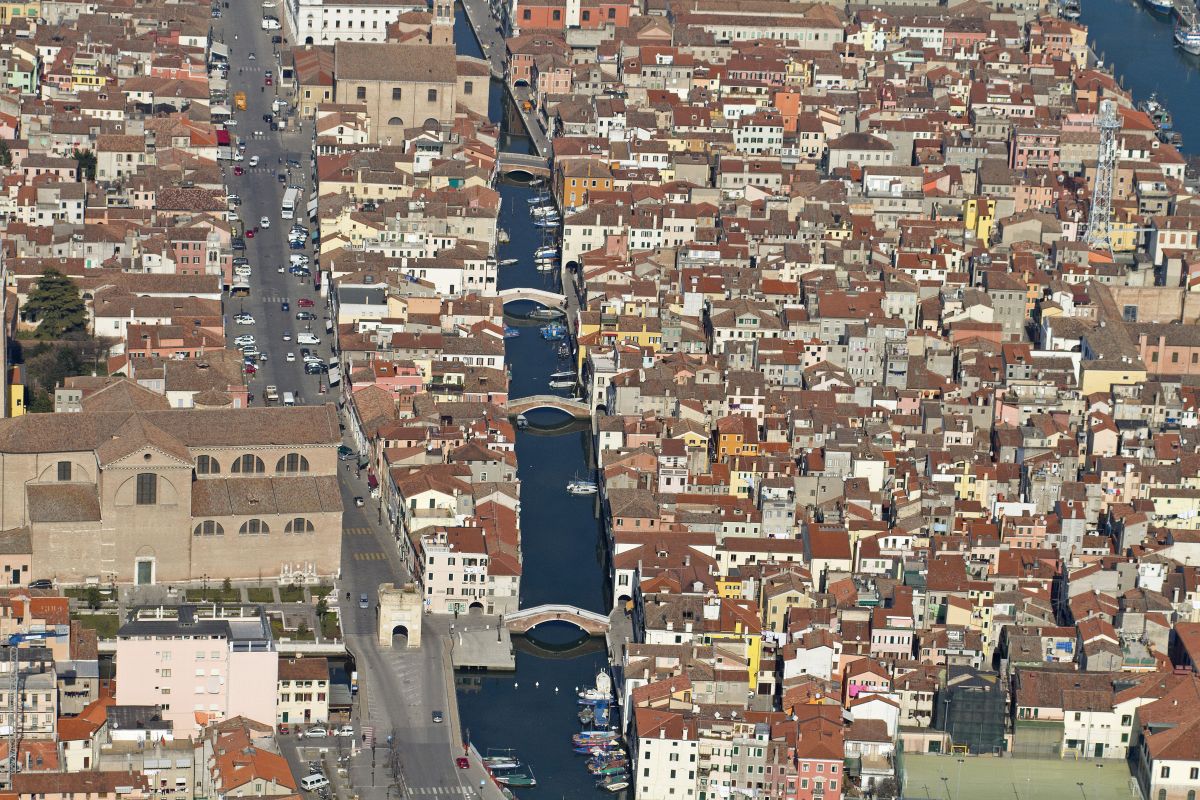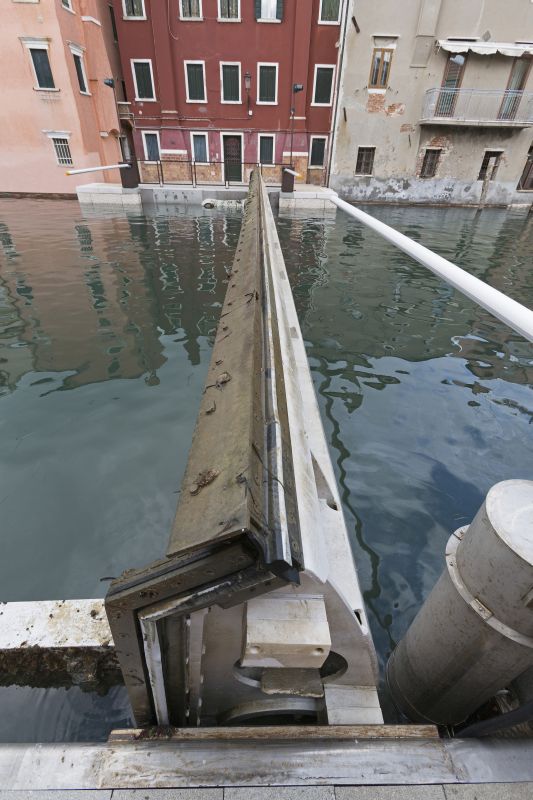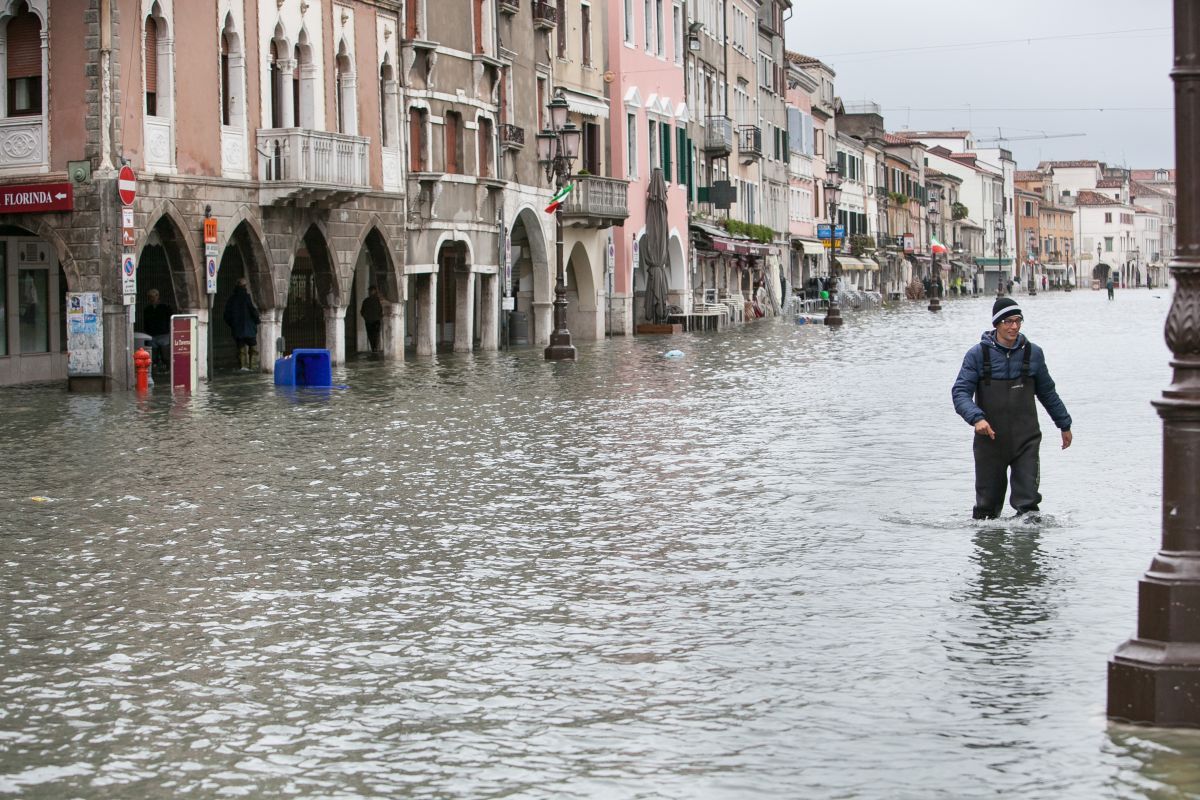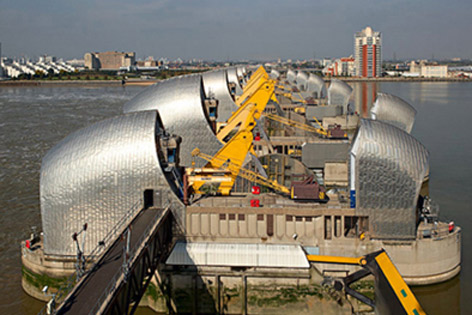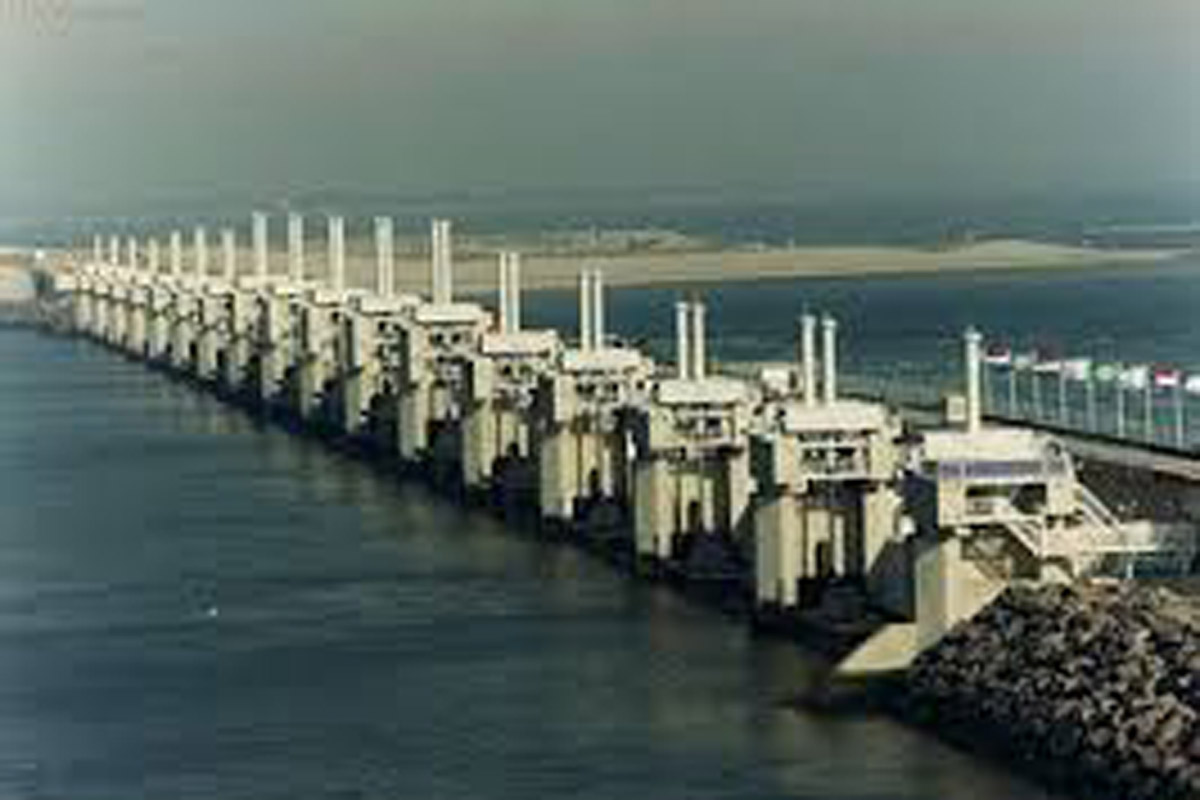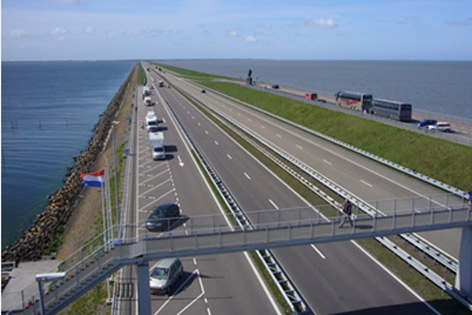Forecasting and ModelSystem CentreOperational managementof the barriers
Read moreMose System
Technology, innovation and development for the environmental and coastal defence
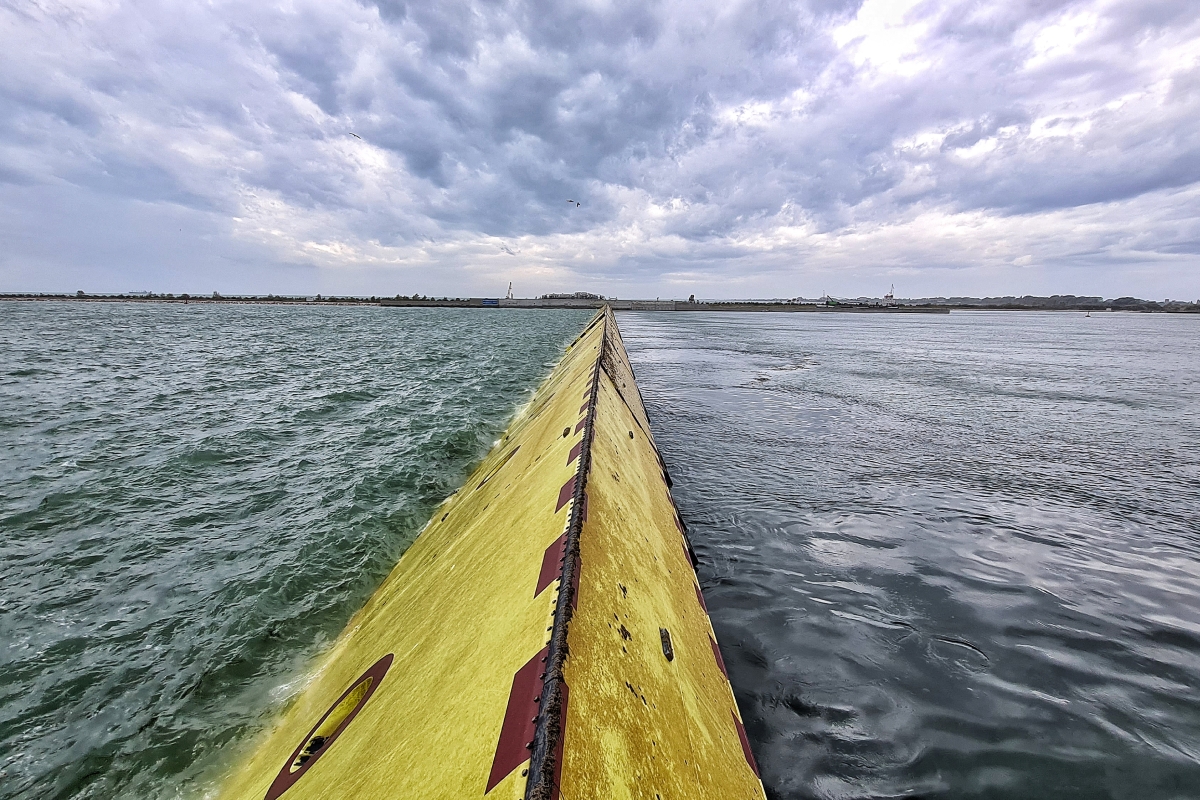
Worksites
The Mose barriers are being constructed at the three lagoon inlets of Lido, Malamocco and Chioggia
Lido inlet
At the Lido inlet are located two rows of flap gates: the barrier of North Lido (21 gates, total lenght 420 m) and the barrier of South Lido (20 gates, total lenght 400 m). The barriers are separated by a new artificial island that houses the main technical buildings for the operation of the gates.
Malamocco inlet
Malamocco inlet is the deepest (-14 m) of the lagoon and it's used by merchant and industrial ships. To prevent interference with normal port activities while the Mose is in operation, a large lock has been constructed to allow the transit of big ships. This barrier consists in 19 gates.
Chioggia inlet
A double lock for fishing boats, emergency vessels and pleasure craft have been constructed at this inlet to allow the transit while the gates are operating. Here will be installed 18 gates.
Arsenal
Management and maintenance of the mobile barriers will be based in the North Arsenal
The brain of the Mose
Through the Consorzio Venezia Nuova, the Provveditorato Interregionale per le Opere Pubbliche del Triveneto is carrying out a complex programme of work in the north area of the Venice Arsenal to recover the buildings and functionally reorganize the area. Interventions in the North Arsenal are included among the measures to safeguard Venice and the lagoon which have been delegated to the State.
Thanks to the Mose, pioneering skills, instruments and technologies in sea defence and environmental protection will be concentrated in this area which for centuries expressed the great sea-going tradition of Venice until its decline in the 1900s. In some of the restored buildings there are home of Consorzio Venezia Nuova. Here, activities of environmental management will be accommodate (integrated monitoring, acquisition and analysis of data on the ecosystem, operational control of the Mose barriers, etc.) In the dry docks area will take place the activities for the maintenance of the Mose gates, of other components of the system and of service vessels. For the North Arsenal, the new activities, for which the spaces are currently being prepared, represent a real opportunity for development in connection with the Mose and sea defence and environmental protection in general. The Arsenal is now becoming a centre for research and production, technological excellence and innovation, creating high levels of specialised employment.
Control room
Operational management of the mobile gates
The decision-making support system
In the Arsenal, work has been underway for some time now to test the Mose operating and control systems (computerised procedures for forecasting high waters, warning systems and barrier raising/lowering decision-making processes), modelling the effects of gate manoeuvres, possible interferences with port traffic, use of the locks, etc.
The computerised system in support of decision-making will allow decisions to be made on barrier closing and opening manoeuvres and therefore on when and for how long the Mose gates will be in operation.
The decision-making support system uses high water forecasts, measured data on tide levels and the increase in water level in the lagoon while the inlets are closed, processed previously and available in the databases.
Simulation and analysis procedures, gate raising/lowering orders and the services for warning and communicating with the other parties involved are controlled by means of special consoles.
Since October 2011, the computerised Mose Control Centre has been operational in the Forecasting and Models Systems Centre in the Venice Arsenal2 to test its performance, reproducing the hydraulic effects of virtual raising of the mobile barriers, using mathematical models which allow the system to be studied as if the inlets were already equipped with the fully functioning gates.
Baby Mose
Protection of Chioggia from high waters and urban improvement
Local defence from flooding
In order to optimise operation of the Mose and make management more flexible, local defence measures are also being implemented in the city centres of the lagoon. The local defences consist in raising quaysides and paving and the installation of small gates in the urban canals. Local flood protection measures have been implemented in many lagoon settlements, but while they all share a common philosophy, the measures themselves are not all the same. The main difference is the height of protection which can be achieved. Some areas such as settlements along the coast can be protected against quite high tidal levels, while in other areas, such as the more delicate and lower lying parts of the historic city centres in the lagoon, the level of possible protection is relatively low.
In Chioggia, local defence measures protect from flooding up to 130 cm (above this level, the city will be protected by the Mose structures) and involve two different procedures. At the "edges" of the city, perimeter spaces and quaysides have been raised. In the central part of the city, Baby Mose is a different solution, implemented essentially involving the installation of two gates on the Canal Vena which, in the event of high water, isolate the canal and prevent the tide from flowing over the quaysides or rising up through the drains, flooding the surrounding areas. As part of work to provide protection from high waters, the banks of the Vena Canal have been reinforced and the rainwater and wastewater collection and drainage systems have been modernised.




